
|
Dark noise in the Olympus C-5050Z |

| My other pages related to the Olympus C-5050Z, C-5060WZ, and X-7070WZ |
|
Noise is the non-uniformity of brightness of individual pixels in a digital image, occurring (to a various degree) in all cameras, regardless of the light sensor they are using (CCD, CMOS, Foveon), the optics, or the electronics and software they use to process the image. When the noise is measured without any light reaching the camera's sensor, we refer to it as "dark noise". This is when the effect is most visible, not being overwhelmed by the actual image-making light. For the general discussion of the noise issues I will refer you to a more general article on this subject, covering the basics. About the samples All samples shown in this page have been taken from "lens cap shots", i.e. exposures in absence of any light reaching the CCD. Pictures were saved in the 1:4 JPEG format, and the in-camera postprocessing was set to defaults, i.e., "Normal" positions of contrast and sharpness. The samples have been taken from the same place in the original image (top-left corner). In order to show the differences between samples more clearly, the published images have been "stretched" in brightness in postprocessing: the 0-32 RGB brightness interval has been stretched to the full 0-255 range (i.e., the brightness of every pixel was increased eight times). Without this exaggeration, in most of the samples the noise would be very hard to see with a naked eye. |
|
Here is an illustration of the difference between a "straight" and "stretched" sample. I have chosen the case with highest possible noise, and even so the effect is barely visible in the raw sample. The stretched one, however, clearly shows both the low- and high-amplitude noise, and therefore it is easier to compare against others. |
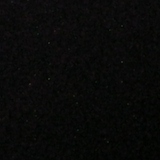
|
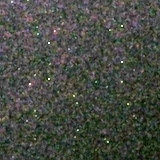
|
|
Straight sample: 16s, ISO 400,no NR |
Stretched sample: 16s, ISO 400,no NR |
|
The data To give you a more or less complete view, I'm showing a set of twelve samples, generated at all four available ISO settings, and at three long exposure times: 1s, 4s, and 16s. Exposures shorter than 1s are not worth bothering with: there is no measurable dark noise there, a very impressive performance! As far as I can see, at ISO 80 noise becomes an issue only at the longest exposures: 15 seconds or more. This is an excellent performance, even better than that of the E-10. |
| Reminder: all these are stretched samples, with noise exaggerated by a factor of eight! | ||||

|

|
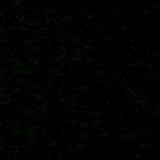
|
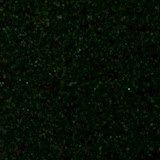
| |
| 64 ISO, 1s,NR off | 100 ISO, 1s,NR off | 200 ISO, 1s,NR off | 400 ISO, 1s,NR off | |

|
|
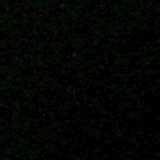
|
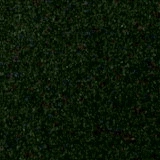
| |
| 64 ISO, 4s,NR off | 100 ISO, 4s,NR off | 200 ISO, 4s,NR off | 400 ISO, 4s,NR off | |
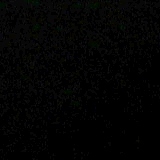
|
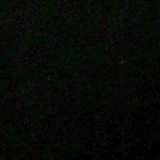
|
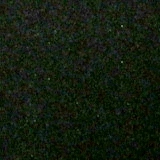
|

| |
| 64 ISO, 16s,NR off | 100 ISO, 16s,NR off | 200 ISO, 16s,NR off | 400 ISO, 16s,NR off | |
|
Noise reduction Now let us have a look at the effects of the noise reduction process. Let me jump straight to the 16-second exposures, so that you compare this row of samples with the last one above. |
| Once again, these are stretched samples, with noise exaggerated by a factor of eight! | ||||

|

|

|
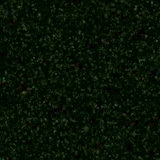
| |
| 64 ISO, 16s, NR on | 100 ISO, 16s, NR on | 200 ISO, 16s, NR on | 400 ISO, 16s, NR on | |
|
Clearly, the noise reduction is working; the effects are quite visible. On the other hand, the general low-light performance of the '5050 is so good, that I don't see any practical reasons to use this feature at exposures shorter than 1 second or at ISO settings below 200. In particular, note that the process removes all the spikes (hot pixels); the remaining noise is, I believe, mostly the random (Type II) component (for a definition see here). C-5050Z versus E-20 It may be interesting to compare the new C-5050Z with the flagship of the Olympus line, the E-20, which was introduced exactly one year earlier. The E-20 was praised for its low-light performance, including low levels of dark noise. I am going to limit the comparison to two exposure times: 1s and 16s, and two ISO settings. Here it is, with the C-5050Z at the top, and E-10 at the bottom; all samples stretched the same way, no noise reduction. (Nb., the hot pixel in the E-20 goes away at 1/4s or so.) |
| Another reminder: these are stretched samples! | ||||

|

|

|

| |
| C-5050Z: 100 ISO, 1s | C-5050Z: 100 ISO, 16s | C-5050Z: 400 ISO, 1s | C-5050Z: 400 ISO, 16s | |
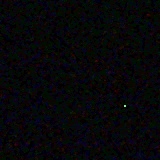
|
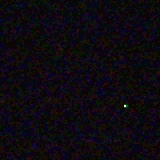
|
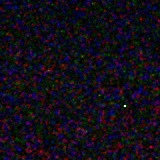
|
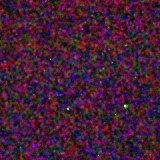
| |
| E-20: 80 ISO, 1s | E-20: 80 ISO, 15s | E-20: 320 ISO, 1s | E-20: 320 ISO, 15s | |
|
The performance of the C-5050Z is as good or better than that of the E-20 (remember: the noise is exaggerated by a factor of eight in the stretched samples). More interestingly, however, the noise pattern is entirely different in both cameras; clearly a sign of not only a different CCD, but probably also of significant changes in processing of the signal. Related pages
|

| My other pages related to the Olympus C-5050Z, C-5060WZ, and X-7070WZ |
| Home: wrotniak.net | Search this site | Change font size |
| Posted 2002/11/29; last updated 2004/11/15 | Copyright © 2002-2004 by J. Andrzej Wrotniak |